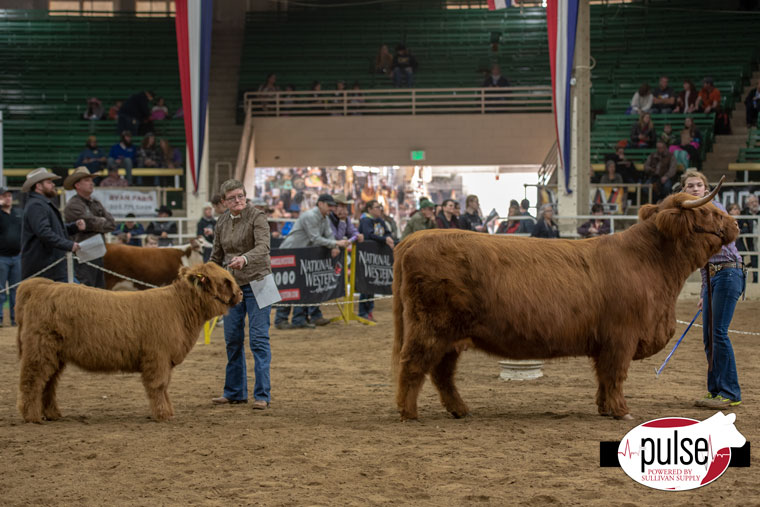

I think (I hope) the problem is, most of these “breeders” do not have cattle experience and are just jumping on a bandwagon. A "mini" Highland cow will still have regular Highland size genetics - and will have a normal sized calf, greatly increasing the risk of dystocia. Not only do you risk passing on poor qualities, you risk endangering the cow and future calves. Breeding animals that carry the chondro gene increases the risk of bulldog calves (a lethal genetic defect).įor any reason, other than being crossbred, it is irresponsible to pass on those genetics. Many so-called miniature Highlands are the result of a Highland being crossed with a chondro Dexter. Crossbreeding is fine, as long as it is not being marketed as a purebred - and the sire & dam do not carry the chondrodysplasia (dwarf) gene. Maybe the animal is not a purebred Highland, rather crossed with another breed - often Dexter. I've heard of a few cases of people buying a very young calf as a miniature, with no instruction to feed milk replacer - and the calf is dead in a week. Some misrepresent the age of the animal, claiming it is older than it actually is, so it seems small. Some so-called “breeders” pull healthy calves off of healthy dams and feed the calves just enough to survive. Maybe the breeder deliberately withheld nutrition to stunt it. Maybe the breeding combination just didn’t work - not every pairing clicks. Maybe it has something congenital going on – bad heart, for example.

Maybe the dam is older and her milk production/quality is declining. Maybe it is a case of placental insufficiency. There are many reasons for an animal to be on the small side. Most often these are stunted, poor examples of the breed. Rising popularity of Highlands has brought out people trying to market smaller animals as “mini” Highlands, commanding high dollars for “pets”. Bulls generally range from 1700-2000 lbs. Adult Highland cows will average 1100-1400 lbs. There is no such thing as a miniature Highland, and certainly not a microminiature one. We have prepared a sample for you:Ĭonsidering Highland cattle? If you are weighing the pros and cons of registered cattle, the following article by Pat White has valuable information to consider in making your decision. If a purebred animal is to be sold without papers, it must be done so in writing – otherwise it is a contravention of both the CHCS Bylaws and the Animal Pedigree Act.Īlso, if you are selling livestock, please ensure you provide a proper bill of sale. And must due so within 6 months of the sale at the seller’s expense.
Highland calf registration#
Similarly, only the registered owner of an animal can transfer registration papers to a buyer. Cattle consume as much as 70 kg (150 lbs.) of grass and graze about eight hours each day. Only the owner or lessee of the dam at birth can register an animal - a buyer cannot, under any circumstances. Scottish highland cattle are an ancient, Celtic breed of cattle.
Highland calf full#
A full description of requirements can be found in our Bylaws (Sections 17 & 18) here:

Please note that there are specific rules that must be followed when registering and transferring Highland cattle in Canada. Baltimore: Johns Hopkins University Press, 1999.BUYING & SELLING REGISTERED HIGHLAND CATTLE IN CANADA

They are now a well-developed breed in the United States and in Britain. Cattle consume as much as 70 kg (150 lbs.) of grass and graze about eight hours each day.Īt one time these cattle were quite rare.Scottish highland cattle are an ancient, Celtic breed of cattle.Habitat Originally rough and rocky terrain Population Global: Unknown Status IUCN: Not listed Sexual Maturity At about 18 months Life Span May be more than 20 years Range Originally native to Scotland. A single calf is most common, although occasionally twins are born. Gestation lasts approximately 277 to 290 days. Male: Males (bulls) grow larger than females (cows) Weight 450 to 1,000 kg (992 to 2,204 lbs.) Diet Mainly grazes on grasses Incubation Mating occurs throughout the year. Scientific Classification Common Name Scottish highland cattle Kingdom Animalia Phylum Chordata Class Mammalia Order Artiodactyla Family Bovidae Genus Species Bos taurusįast Facts Description Scottish highland cattle have handlebar shaped horns and long, thick, shaggy coats Size Shoulder height: 0.9 to 1.1 m (2.95 to 3.6 ft.)


 0 kommentar(er)
0 kommentar(er)
